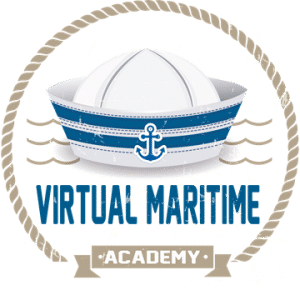Preparing for a Port State Control Inspection: What to Expect is an essential guide for ship operators, crew members, and maritime stakeholders. Understanding the complexities of Port State Control (PSC) inspections not only ensures compliance with international regulations but also enhances vessel safety and operational efficiency. In this article, we will delve into the purpose of Port State Control inspections, highlight common areas of focus during these inspections, provide practical steps to prepare your vessel, and share best practices for ensuring a successful inspection. By arming yourself with the right knowledge and strategies, you can navigate the inspection process with confidence and peace of mind.
Key Takeaways
- Port State Control Inspections are critical for ensuring vessel compliance with international regulations.
- Key areas of focus during inspections typically include safety equipment, environmental standards, and crew certification.
- Vessels can prepare for inspections by conducting thorough pre-inspection audits and addressing deficiencies.
- Implementing best practices, such as crew training and proper documentation, can greatly enhance inspection outcomes.
- Understanding the inspection process can help crews feel more confident and reduce the likelihood of penalties.
Understanding Port State Control Inspections
Understanding Port State Control Inspections is crucial for shipowners and operators who aim to ensure compliance with international maritime safety standards. Preparing for a Port State Control Inspection: What to Expect can significantly enhance a vessel’s chances of passing the inspection without issues. These inspections, conducted by authorities in a port state, evaluate foreign vessels to ensure adherence to safety and environmental regulations set by international conventions such as SOLAS (Safety of Life at Sea) and MARPOL (Marine Pollution). Typically, inspectors check the condition of the ship, its documentation, crew certifications, and compliance with pollution prevention measures. Therefore, thorough preparation is essential. This preparation includes conducting routine checks, ensuring all certificates are up to date, and holding crew training sessions to familiarize them with procedural expectations. By understanding the Port State Control Inspection process and preparing adequately, vessel operators can not only avoid costly delays and penalties but also foster a culture of safety and accountability within their maritime operations.
Common Areas of Focus During Inspections
When it comes to preparing for a Port State Control inspection, ship operators often have various common areas of focus to ensure compliance and smooth sailing through the inspection process. Understanding what inspectors typically scrutinize can make a significant difference in the outcome. Key areas include safety equipment, such as life jackets and fire-fighting gear, ensuring they are up to date and easily accessible. The condition of the vessel’s hull and machinery is also a critical focus; inspectors will look for any signs of wear and ensure maintenance records are in order. Additionally, documentation like the vessel’s safety management system and crew certifications must be thoroughly checked. It’s also vital to assess the environmental compliance aspects, including garbage disposal and pollution prevention measures. By being proactive and preparing for a Port State Control inspection, operators can better navigate the complexities of maritime regulations and minimize the risk of fines or detentions.
How to Prepare Your Vessel
Preparing for a Port State Control Inspection is a crucial aspect of maritime operations that can significantly impact your vessel’s efficiency and reputation. When gearing up for this inspection, it’s essential to understand the necessary steps and what to expect during the process. First and foremost, ensure that your vessel’s documentation is complete and up to date, including the ship’s certificates, validity of the crew’s licenses, and compliance with international conventions. Conduct a thorough internal audit of safety equipment, pollution prevention measures, and operational practices. Engage your crew in preparatory drills to familiarize them with emergency procedures, as inspectors often evaluate crew readiness as part of the inspection. Additionally, review past inspection reports to address any issues previously highlighted. Being organized and proactive not only enhances your chances of passing the inspection but also contributes to improved operational standards and maritime safety. Remember, effective communication with your crew and a clear understanding of the inspection requirements are key components of successfully preparing for a Port State Control Inspection.
Best Practices for a Successful Inspection
Preparing for a Port State Control Inspection: What to Expect is crucial for ensuring smooth operations for vessels. This process can often look daunting, but understanding the best practices can significantly ease the tension. First and foremost, it’s essential to ensure that all documentation is in order. This includes certificates related to safety, pollution prevention, and crew qualifications, which should be readily available for inspection. Regular internal audits are also recommended to ensure compliance with international regulations, as this will help identify any potential issues before they arise during the actual inspection. Furthermore, conducting drills and training sessions with the crew not only reinforces safety protocols but also prepares them to answer questions confidently during the inspection. Another vital aspect is maintaining the vessel, ensuring that all equipment is operational and that the ship’s structure is in good condition. By adopting these best practices and understanding what to expect, ship operators can navigate the inspection process more efficiently, thereby minimizing delays and promoting a culture of safety.







